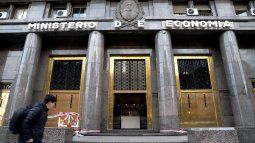The change in the denomination of the local debt by the rating agency is due to the exchange launched by the Ministry of Economy.
The global rating agency S&P on Thursday cut Argentina’s debt rating in pesos to ‘SD/SD’ (Selective Default) from ‘CCC-/C’, after the exchange announcement. The agency also downgraded Argentina’s national scale rating to ‘SD’ from ‘raCCC+’.
The content you want to access is exclusive to subscribers.
The Ministry of Economy launched a voluntary debt swap through callable options in 2024 and 2025 to smooth out the short-term financial scenario in an electoral year, in the midst of the severe difficulties that the local economy is going through.


Between banks, insurers and companies, the volume under reprofiling would be between 3 and 3.5 trillion pesos (up to about 17,000 million dollars), all amortizable in the first half of 2023.
What will the debt swap look like?
The ministry announced the swap after negotiations with bank representatives and financial institutions. As far as he could find out Ambit between operators, The new exchange is expected to have 60-65% adherence.
50% will be from the intra-public sector debt, so the rest will come from the private sector. If it exceeds that percentage, it could be considered a great success for the Minister of Economy, Sergio Massa and his right-hand man, Gabriel Rubinstein.
The Association of Public and Private Banks of the Argentine Republic (ABAPPRA) supported the debt swap and announced that it will enter into the operation by offering its portfolio of titles.
“The representatives of different public and private entities of Argentina associated with ABAPPRA promised to accompany the exchange, according to the eligible instruments included in the operation“, the entity said in a press release.
The exchange – to which you can adhere until next Monday – postpones the maturities of March, April, May and June of this year to 2024 and 2025; To this end, two alternatives are offered to investors: purchase bonds tied to inflation or a basket of assets with a percentage of dual bonds, which are adjusted for inflation or the official exchange rate.
Source: Ambito




